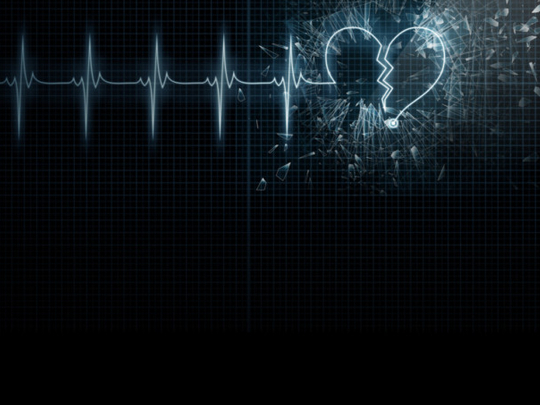
The statement you broke my heart usually adds a tonne of guilt and a fair amount of awkwardness to any break up. However, those two words, broken and heart, have been overused to such an extent that people tend not to take them too seriously.
It has even gone as far as relatives complimenting young children with, “You will be a heartbreaker when you grow up!” Little do they know that they are wishing a legitimate heart condition upon a generation of unsuspecting people.
But there is such a thing as a broken heart, and it is called Takotsubo cardiomyopathy.
Dr Hesham Mohamed Saad, Specialist Cardiologist at Mediclinic Welcare Hospital, explains that broken heart syndrome is a temporary condition resembling a heart attack that mainly occurs in women.
“Takotsubo cardiomyopathy or broken heart syndrome is a condition that is directly related to our emotional well-being. The heart does not literally break but expands and enlarges to the point of bursting due to psychological stressors such as emotional loss, stress and even relationship break-ups,” says Dr Saad.
More than 90 per cent of reported cases are in women aged 58 to 75 years. Research from the Harvard Medical School suggests that at least 6 per cent of women evaluated for heart attacks actually have this disorder, which may go unrecognised.
Dr Saad goes on to explain that the exact cause of this syndrome is unknown but experts think that surging stress hormones, for example adrenaline, play a part. This essentially leads to the stunning of the heart, triggering changes in its muscle cells or coronary blood vessels that prevent the left ventricle from contracting effectively.
The British Heart Foundation (BHF) states that there are a number of theories surrounding the cause of this condition. However, according to information provided by the BHF, about three quarters of people diagnosed with Takotsubo cardiomyopathy have experienced significant emotional or physical stress prior to becoming unwell.
Researchers suspect that women are more vulnerable because of reduced oestrogen levels following menopause. This bulging ventricle resembles a tako-tsubo, which is a pot used by Japanese fishermen to trap octopuses. Symptoms include chest pain, shortness of breath, fatigue, rapid heartburn, palpitation and dizziness, and can mimic a heart attack or ischaemic heart disease.
The condition is generally treated with standard medication for heart failure, such as beta blockers, angiotensin converting enzyme inhibitors and diuretics. It is also important to alleviate any physical or emotional stress that may have played a role in triggering the disorder.
When you suffer from broken heart syndrome, the heart swells up and there are movement abnormalities in the left ventricular chamber with ballooning of the apex.
“The electrocardiogram abnormalities of this syndrome also resemble those of a heart attack but on doing a coronary angiography, the coronary vessels are normal, hence showing no obstruction. The emotional stressors cause physical reactions in the body,” says Dr Saad. Most of these abnormalities usually clear up in one to four weeks and most patients recover fully in two months.
According to studies, about 60 per cent of patients who consult for a cardiac condition are actually suffering from an exaggerated and unnecessary feeling of anxiety rather than from a cardiac illness.
When asked if broken hearts can be avoided and if so, how, Dr Saad replies, “Situations such as loss and heartbreak are unavoidable in our lives but any prolonged stress and anxieties could have a larger impact on our health. Also have regular check ups and take care of your emotional and physical well-being. And try not to let anyone break your heart.”
Fortunately, most people recover rapidly from a broken heart following immediate medical attention as well as the right treatment, with no long-term heart damage.








